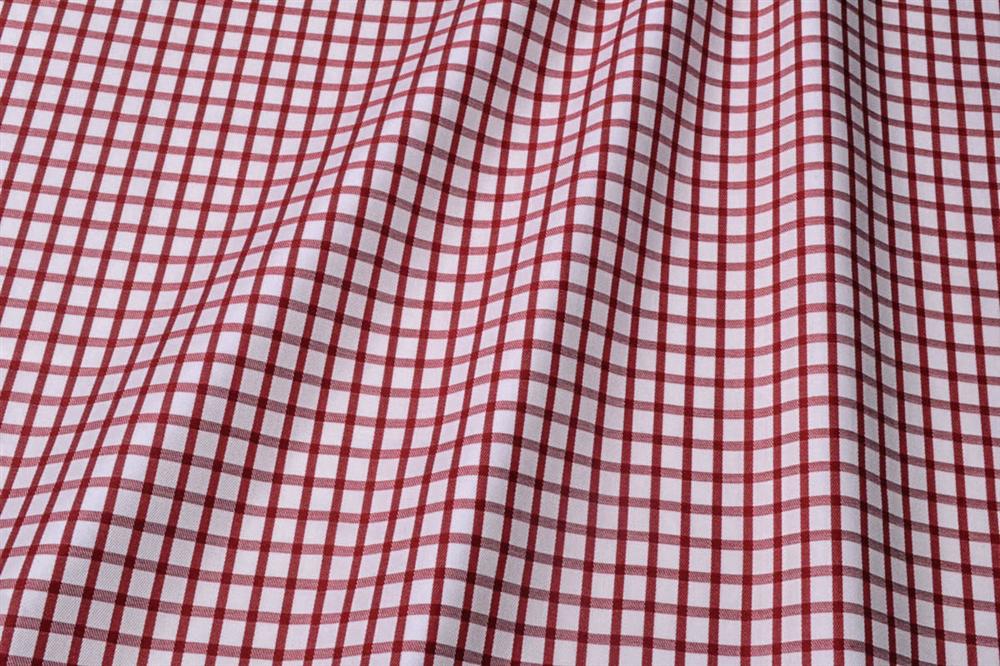Twill Shirts
What is twill fabric dress shirt?
Liss 3 Fabric:

Twill fabrics have a weft thread that runs over and under multiple warp threads (as opposed to a plain weave where the weft crosses a single warp thread at a time). This can create interesting patterns like a herringbone, houndstooth or a simple, diagonal rib.
Twill is a beautiful, interesting and diverse weave: different threads yield dramatically different results.
There’s a decidedly luxurious, elegant look to a fine twill shirt with its silky diagonal texture, lustrous sheen and gentle drape. (The ‘drape’ is the way a fabric hangs: so whilst poplin has its sharp, crisp look, twill hangs softly.)
The fine-ness of twill derives from the fine-ness of the thread and the tightness of the weave. The fabric itself is more substantial than poplin, and highly durable.
Being so soft, a twill shirt is easier to iron and more resistant to wrinkling.
- Fine twill
-
Heavy twill (Imperial and Cavalry)
-
Royal twill
- Denim
- Herringbone
Twill Fabrics- these fabrics are created using a diagonal weave. As a result, twill fabrics tend to be soft and wrinkle less than some other fabrics. Twill fabrics are a good choice if you like softer, heavier fabric.
Herringbone – describes a distinctive V-shaped weaving pattern usually found in shirt fabrics, under the family of twill shirtings. The pattern is called herringbone because it looks like the skeleton of a herring fish.
Technically, denim is a twill: take a close look at the inside of a pair of jeans and you’ll spot the characteristic diagonal pattern.
What is a twill dress shirt?
Poplin, sometimes called broadcloth, is a plain weave which means the threads alternately cross over and then under each other. This results in a very smooth and durable fabric that has an almost silky hand feel, particularly with higher thread counts. Also, poplins look very crisp when ironed.
What is a cotton twill fabric?
When twills are printed, this is typically done on lightweight fabrics. Soiling and stains are less noticeable on the uneven surface of twills than on a smooth surface, such as plain weaves, and as a result twills are often used for sturdy work clothing and for durable upholstery. Denim, for example, is a twill.
Twill Shirt Fabrics
Within the twill fabric family, you can find a variety, including:
o
Imperial and Cavalry Twills
These are the thickest twills, and they will have a very bold, noticeable texture to them.
o Royal Twills
These have less diagonal texture than the Imperial or Cavalry Twills, but their texture will still be noticeable from a close distance. We typically reserve this name for very high thread count twills (120s) that are of only the best quality.
o Fine Twills
Woven more tightly, the diagonal texture will only be apparent on close inspection. A simple, solid color twill dress shirt is extremely dressy and fit for any formal occasion.
Twill fabric is easily recognizable because it will show diagonal weave or texture. It has a weft thread that runs over and under multiple warp threads. Because of the diagonal texture twill is really soft and will drape more easily. It won’t give you the same “crisp” look that some others can, but it’s relatively easy to iron and resistant to wrinkles.
That’s the right fabric if you’re looking for a shirt:
- Formal
- For business travels
From the men’s collection https://www.bivolino.com/en/men-shirts-business








